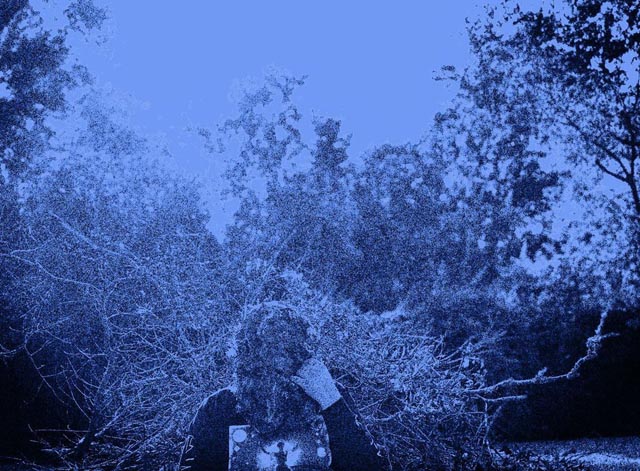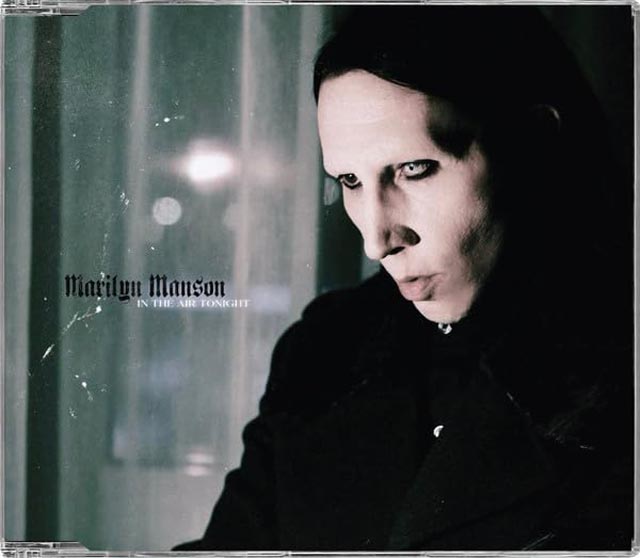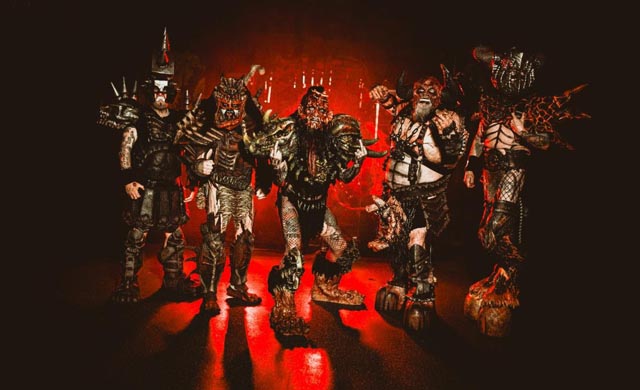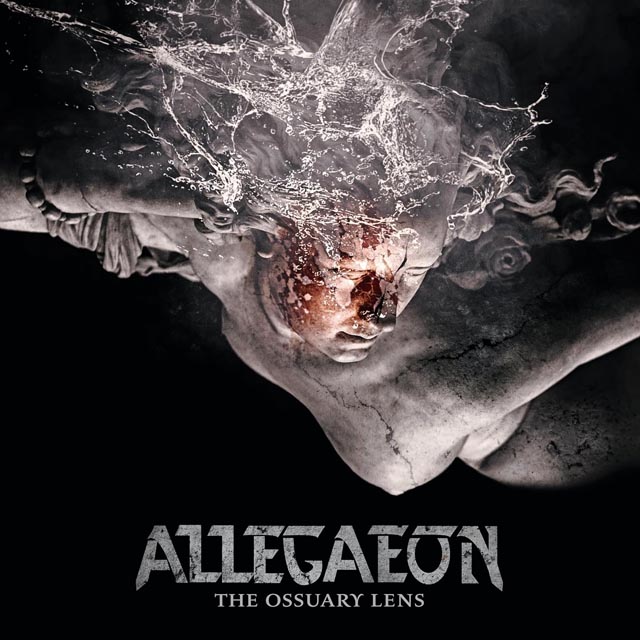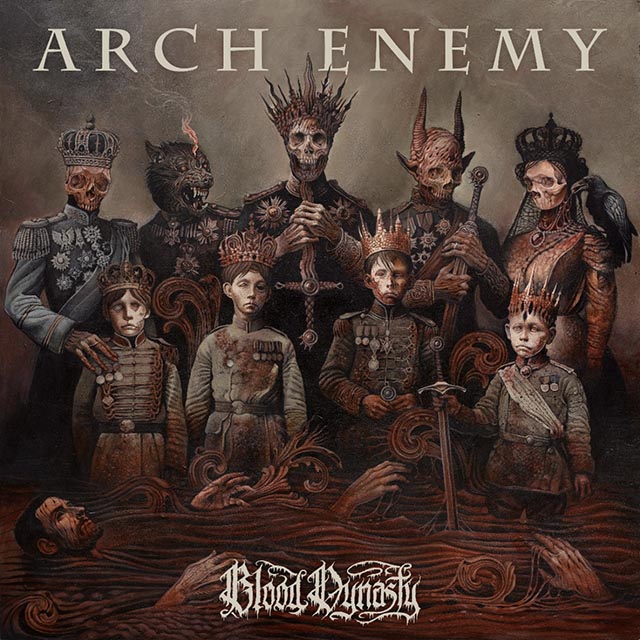 You’ve all been salivating over Brutal Legend, the game that’s had every metalhead talking. Whether it’s the amazing cameos from Ozzy, Lemmy, Halford, Lita Ford and others, the best metal soundtrack in the history of gaming, or just the bad ass gameplay, you’ve heard about this game.
You’ve all been salivating over Brutal Legend, the game that’s had every metalhead talking. Whether it’s the amazing cameos from Ozzy, Lemmy, Halford, Lita Ford and others, the best metal soundtrack in the history of gaming, or just the bad ass gameplay, you’ve heard about this game.
Brutal Legend creator and President of Double Fine Productions Tim Schafer (who also created the much-beloved cult game Pyschonauts) and Musical Director Emily Ridgway took a break from the usual video game press circuit for a special round-table call with Metal Insider and other lowly metal literati to dig deep on making a commercially-viable yet still authentic metal game, bringing in metal legends as talent, picking that insane soundtrack, and metal’s ability to be simultaneously ridiculous and mighty. And yes, someone asked what happened to Dio.
You can tell that Brutal Legend was made with a great deal of reverence and affection for metal, and it’s not just a caricature of what some people think metal is. It’s clearly made by fans and for fans. Do you think that the rise of Guitar Hero and all those other games giving metal more of a mainstream outlet, especially in the video game world, taking authentic and underground metal bands, paved the way for you to really go all out with Brutal Legend and make an authentic experience, instead of doing something that might have been a tamer version?
TS: It definitely made it easier for the pitch. That was always the way we were going to do it. But the first time we pitched the game to publishers (around 2005, before the first Guitar Hero) there was some pressure to change the genre of music to hip hop. One publisher even brought up country as an alternative. And I was like “No, it’s got to be… it can’t even really be just hard rock. It’s got to be heavy metal”, because of the lore. Heavy metal sings about fantasy themes, and it sings about epic Norse mythology and all this crazy stuff of legends that other music doesn’t have.
So it really had to be about the metal, and we were never going to compromise that. But then when it came time to pitch the game again, when we switched publishers, the Guitar Hero games had come out, and it was much easier to talk about metal and rock. And we actually got to use the word “metal”, which for a long time… it was just like “Let’s just call it ‘rock’. How about you guys just make it metal, but we’ll call it ‘rock’.” Then all of a sudden it was okay to talk about metal again. That made it a lot easier, but it never would have changed, I think, the content of the game.
I have read that the game was designed with [main character] Eddie first and then working the world around him. And you’ve got several of the legendary metal icons doing their little cameos. Were each of those people picked based on who they were and then creating chapter for them or was that more based on finding someone to fit an existing scene?
TS: We started with some kind of blank slots that were vague at first. Like “we need this kind of a bad guy and we need this,” and it developed side by side. We also really wanted to get Rob Halford in the game. So it was like a little puzzle we were trying to fit together, which of these roles could he play. And then can we tailor their strengths and in enters a character who needs to shriek in a really high-pitched register for a long period of time. So we end up working with Rob and he turned out to be so funny and such a good sport about it, and really a great person to work with.
So we added a character for him just to handle the fact that he could also do really low notes. He has such a range that we added this Baron character that looks a lot like what Rob Halford actually looks like, and he rides on a chopper and speaks in this little deep low voice. So we did kind of add some characters to work with the strengths of these guys. And some of them were straight up created for that person. Like Lemmy, we had the notion of a character that played the bass and healed the wounded by playing the bass so well, and that seem like a natural fit for Lemmy. And when you think about how we came upon the others we had, it kind of went hand in hand.
At first, I didn’t think we would get anyone famous in the game at all. I didn’t think we were going to have access to Ozzy and all these people. So I was actually using names like Halford and stuff in the story because there’s a character named Lars Halford and there’s a character named Lita. Then we ended up actually getting Rob Halford [and Lita Ford]. And it was embarrassing because we had to re-dialogue where he was talking to the Halford character saying “Listen, Halford!” and I was like, “I didn’t know we were going to get you when I named that character!”
Is there one artist that you wish you could have gotten in to the game, but couldn’t?
TS: We had two other bands that were on our list that just got down to the wire. It was down to the lawyers who were like “we can’t get in touch with this person, we can’t figure out who owns the rights to the songs.” And it got to be kind of tricky so there were, but I worry that if we ever made another game, we might still like to get those guys in. I think overall though, I was completely amazed by how we got 99% of the people we wanted. We got all these crazy people we thought there was no way in hell we would get.
How true is it that Ronnie James Dio was replaced by Tim Curry due to an issue with Ozzy?
TS: We cast Tim Curry in the role of Doviculus. If you listen to the character with the visuals, I think that you can see there really was kind of a purpose for that. I love Dio and I would love to have Dio in the game, and things did get a little complicated with that whole set up, but I think in the end Tim Curry in the role of Doviculus was the right choice to make, but I would love to work with Dio some other day.
Was Jack Black your first choice for the voice of Eddie Rings or were there others?
TS: He was always going to be a roadie who went back into ancient metal. But some of the early concept art for him looked a little bit like Lemmy, just because we thought maybe he should be this really grizzled roadie who’d been though it all and seen it all. We did it like that, then we just decided to make him a younger character who, thinking about Jack Black in School of Rock and the character he plays as himself in Tenacious D, and just has that aspect where he so sincerely loves rock and loves the music so much. And there’s nothing ironic about it, but he also has moments where he’s so over the top that it’s a little ridiculous, and it’s like that combination of being both awesome and ridiculous at the same time. He was made into Jack being the inspiration for the character, so we just naturally started making the concept look a lot more and more like Jack as we went on. Although he was kind of like Jack mixed in with a little, I guess some Glenn Danzig.
But we never thought that we would get Jack, and then we heard he had played our previous game Psychonauts and he had like it. So we had a meeting with him, showed him the concept art and he signed up to do it.
Did he improvise a lot? Or did he pretty much have to stick to the script?
TS: Both. I would come with the script and have everything written out and he would read it that way and then he would read a few variations and then he would start kind of riffing on it and going off in different directions and he would just do some takes that maybe he thought that we weren’t even recording. He was just joking around. And sometimes those turned out to be the funny ones that we used as a mix of scripted and unscripted. And then sometimes we just recorded him playing the game and we ended up using some of that dialogue too.
When you were picking out songs, was it something you did behind the scenes or did all the early buzz lead to labels and bands coming to you and soliciting a spot on the game?
TS: We had a little bit of that. But we didn’t work off of that at all. When we started, we were with a different group of people handling the licensing stuff. [Ed. note: Brutal Legend switched publishers mid-development. More on that here.] There really was kind of an internal discussion, just on the developmental side, everyone coming up with their own wish lists. Then chasing down the labels that we had to hunt down and do the licensing for. But no, we didn’t hook up with any particular label.
ER: I don’t think they would have even known you know what Brutal Legend actually was.
TS: At the time.
ER: At the time, about a year or two ago, when they were putting all this stuff together, we weren’t on anyone’s radar, really. I mean now…
TS: It’s kind of funny now that we have a bunch of press and the game is done, we’re getting a lot of envelopes full of CDs and a lot of MP3s.
It seems that death metal would reign supreme on a soundtrack instead of a lot of the [more mainstream acts] you have on there. There is a lack of meat and potatoes death metal like classic Morbid Angel, Suffocation, Cannibal Corpse and bands like that, especially with a game as brutal and gory as this.
ER: That’s a very astute observation. I think that when we were choosing tracks, we were definitely trying to get an eclectic mix. Above and beyond, we were trying to go with what was appropriate for the visuals, and what was appropriate for the story.
TS: It’s funny how that worked out, because we picked what would fit the story, what the characters were talking about, what they’re doing. That’s why there’s a whole section of the game that has a lot of hair metal. It’s not that I personally listen to a lot of that stuff myself, but it was what we’re dealing with. With the character that Rob Halford plays, when we’re dealing with that character, we have to represent that with songs that would suit that group.
Was each song was chosen for the particular scene or character in each part?
ER: Exactly. That was what we spent most of our time collaborating on and making out choices based off structure of the song, the kind of vibe the song gives off, whether it goes from being really slow at the start and then coming in with a huge riff one minute in. All that stuff was taken into consideration.
What’s the draw of the game for non-metal fans?
TS: You don’t have to be a pirate to like Monkey Island. If you’re not into the music at all, you won’t get a lot of the subtle references or the lyrics that are woven into the game at every level. But metal just becomes a cool background for all the action and humor in the game, and all the things that are still there because it really is essentially an action game. It’s you and your axe. And you have a guitar, but it’s really a ranged weapon.
If you don’t like metal, you’ll still like all the driving and the axeplay and the humor in the game. But then my goal is, secretly, even if you go in not liking metal, by the time you finish playing the game, you will. So we put a lot of the greatest songs in there, and also it was a big deal to make sure that whenever you press the pause button, the game brings up the name of the playing track and the band who’s playing it. And when you’re driving around in the car, you can bring up this little kind of MP3 player called the Mouth of Metal where you can see all the bands and all the songs, and you can organize it by sub-genre. So you can actually get a little lesson in like sub-genres of metal. I optimistically believe that a lot of the people who don’t know they like metal will turn out to love metal. And people who do like metal and know the major bands will find a bunch of new bands that they didn’t know they liked.
Were you ever afraid that it wouldn’t appeal to the masses? Did you ever think of taking a mainstream, generic route with the game?
TS: It just wouldn’t work if it wasn’t metal. If it wasn’t as epic and filled with lore. I’m trying to imagine a country version of the game and it doesn’t feel possible. It was more just an issue about whether it was going to be a hard for us. Whenever you’re doing something creative and unique, it’s always kind of a battle and you have to be willing to fight for it. I thought we were going to have to fight when we got a publisher, they would have a deal with this label and here are all the “hot bands” who they have coming out with new albums around the release of the game. So here’s a list of songs you have to have in your game. And I was really upset at that possibility and prepared to fight against that, and we were lucky enough when we signed with EA, they never put forth a list like that. One by one their licensing group went after the rights to [the songs we wanted] and got them in the game.
How much research did designers have to do as far as visuals? I’m assuming not all of them are metalheads, so did you have to school them in the ways of metal or blast metal all day long at their desks?
TS: There’s definitely people who are predisposed to metal and people who are not. We brought in a lot of research material and books and brought people to some metal shows. But not everybody on the team has to. The person painting the leaves green doesn’t have to know all the lyrics to every Megadeth song. But I think a lot of people did find out they like metal more than they thought they did as we worked on the game.
How much of the art and story is completely original, and how much is sort of inspired from your favorite bands, lyrics and album art?
TS: I started with a backstory for the game that was inspired by reading about Norse mythology. I didn’t really listen to anything directly, but just kind of more of that spirit of Norse mythology, like the world and mankind being created by this giant cow licking an ice floe, and eventually it licks this piece of ice clean enough that it becomes a human. It’s very, very crazy, surreal images. That inspired me to make my own mythology for the world. Then the story flowed out of taking that as a backdrop and then throwing a roadie into it, and how he would try and deal with that.
The game obviously can be tongue in cheek, and has a sense of humor about the genre, but it’s not a parody either. And the gameplay is serious and not just a joke, fluff game. How did you find a balance between like having a sense of humor about the genre and not taking it too seriously, but still making a quality, deep experience?
TS: I really love the music. And I know that there’s ridiculous stuff about the music and you could look at a series of heavy metal album covers and see some that are pretty funny, but they’re also fucking awesome at the same time. When you have a situation where you can have a six-legged Mastodon walking in front of a chrome volcano, these things are over the top and to some people might seem funny, and they are kind of funny, and you can’t be too joyless about the whole thing and not see the humor in it. But realize that it’s also awesome. It’s kind of weird that those two things can exist side by side, but I think it’s totally possible.
That’s one of the reasons Jack was important to the process. He works that line all the time. I was worried about how some of the “rock gods” that we had in the game would react to it, if they’d think we were making fun of them. I was talking about Spinal Tap with Ozzy Osbourne, and he was like, “I love that movie! When I first saw it I thought it was a documentary!”
I think Spinal Tap is a good example. You can tell those guys are playing those songs well enough that they must also actually like that music. Even though it’s a parody, it’s not a mean-spirited parody, or someone from the outside looking in. It’s someone making fun of something they really love. The game has hopefully funny moments, but it’s not a parody. As you play it, [you realize] it is very much a love letter [to the genre].

